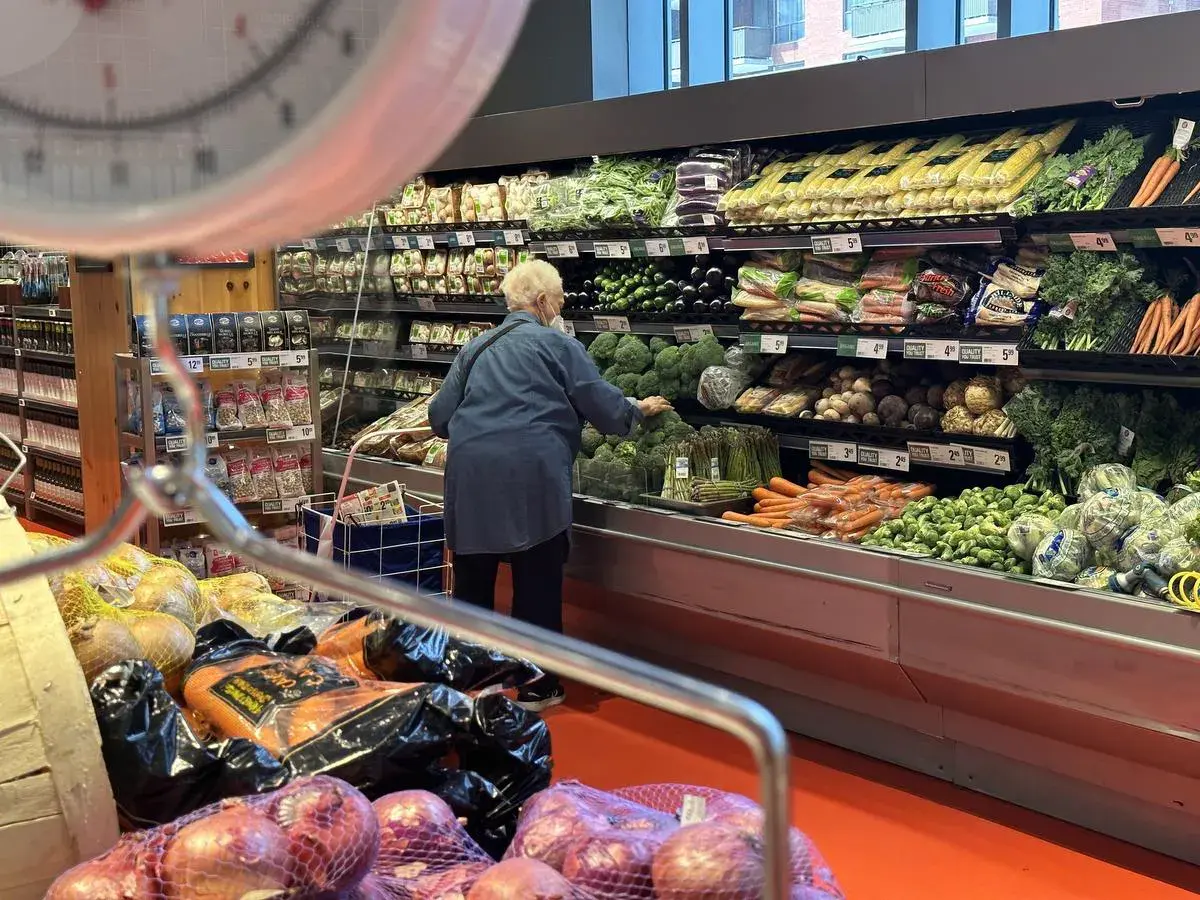If you take a close look at the produce aisle of your grocery store, and look at the packaging instead of the vegetables and fruit, you’ll notice just how much plastic is in use.
Sliced mushrooms displayed on trays of polystyrene foam — a plastic now banned for use in takeout — and wrapped in plastic film, which soon won’t be collected in the blue box.
Peppers encased in clear plastic packaging, enticing you to pay less if you buy several.
“What they’re doing right now is just totally unsustainable from a waste perspective and from a plastics perspective,” says Karen Wirsig, plastics program manager for the Canadian organization Environmental Defence.
“If we’re trying to avoid food waste, then packaging things up and forcing me to buy 10 when I only need five is a terrible idea.”
Environmental Defence conducted an audit of 54 grocery stores across Canada — major grocery chains as well as independents — and found that 64 per cent of items in the produce, baby food, pet food and soup aisles were packaged in plastic. The group released its findings in April.
“The growth in this type of packaging works against the government goal to eliminate plastic waste by 2030,” according to the Environmental Defence report. “The increase in use of plastic packaging of all types also raises concerns about human — and particularly baby and toddler — exposure to chemical additives commonly found in plastic packaging, including phthalates and bisphenols.”
The federal government has banned some hard-to-recycle plastics used for takeout containers, as well as some other single-use plastics such as straws and ring carriers, as part of its goal to reach zero plastic waste by 2030. But aside from a ban on single-use plastic bags, there are no restrictions in grocery stores.
The government says it is “looking at the best way to manage the use of excess or unnecessary plastic packaging in grocery stores and will be publishing a discussion paper in the coming weeks for public comment,” according to an email from Environment and Climate Change Canada.
Canadians throw away three million tonnes — that is, three billion kilograms — of plastic waste every year, according to ECCC, and less than 10 per cent of it recycled.
Wirsig, who sits on a federal advisory committee looking at how to reduce plastic waste and pollution, says the government is considering a mandate of 50 per cent recycled content in plastic packaging, but may exempt food packaging because “it’s very difficult to get food-grade recycled plastic.”
Plastic, in general, can be difficult to recycle for a number of reasons.
Residential plastic waste is often contaminated by food, which devalues it because of the sorting that would be needed to remove the contaminated items. Plastic packaging can have numerous layers of materials, making it difficult to separate them for recycling. Canada lacks the physical infrastructure to scale up recycling. And environmentalists say that recycling plastic will release more chemicals and microplastics into the environment.
Environmental Defence has been pushing for reusable systems.
“Probably the most successful long-standing reuse and refill program that never has gone away is beer bottles,” says Wirsig, referring to the deposit return program at Ontario’s beer stores. “How could we adapt that to other things that come in jars? Or even cans with lids that can be resealed.”
One company that is trying to help producers reuse their packaging in grocery stores is Circulr, which offers a deposit system on glass jars used by more than 20 brands.
Consumers who return the jars to one of the company’s collection sites in Toronto, Kitchener-Waterloo, Guelph or Cambridge can reclaim a minimal deposit fee through an app. The company sanitizes the jars and returns them back to the same producers where possible, so that they can reuse them.
Circulr is working with a number of stores and brands, but has yet to scale up the program to put collection sites in one of the big grocery chains in Ontario, something that the company’s co-founder Charles Binks-Collier hopes to do this year.
Wirsig says grocery stores can be instrumental in reducing plastic packaging.
“They drive a lot of the packaging decisions. And they can drive that change too,” she says. “Certainly they should start with their own brands … But I think they need to also apply pressure” to other brands, she says.
“Loblaws was in a fight with Frito-Lay recently,” she says, noting a dispute over pricing between the grocery chain and the snack food producer that resulted in a shortage of the snack-maker’s wares on shelves for more than a month.
“You could have a fight about packaging.”



I’d love for glass jars to be way more of a thing. Or even cardboard, as much as possible.
The devil’s advocate against glass is that it might be too heavy (which, well, that’s why we have carts, and most cities are so unwalkable that most people aren’t carrying them home in their hands). A really pushy plastic lobbyist could probably try some “Think of the children” take against broken jars, but some brands might be into the premium look of glass for their products.
But cardboard seems like the best thing. We don’t actually recycle enough of our paper, and having a stand of flat boxes that you can quickly put together with the same capacity as those fruit/vegetable bags could be another step forward. They can even replace the foam/plastic wrap packaging by just popping the top flap open to see the green beans inside or whatever. And aren’t we trying to boost our paper manufacturing industry in Canada? There ya go - it’s cardboard time
To add to your devil’s advocate against glass, the extra weight also means more carbon emissions to transport. Recycling of glass is sort of a nightmare too, although if we standardized some of the shapes they could be washed and reused instead of trying to recycle.
Well, that’s all true, but that’s very much based on trying to change things in a vacuum.
More carbon emissions? Yes, if we stick with today’s methods of transportation. So much progress keeps getting hamstrung to find cleaner ways of moving forward, in addition to the poor working conditions of those operating those modes of transportation. But through systemic changes, that could change. Carbon emissions might go up, but so could taxes or fines related to that pollution and inefficiencies. I know everybody rolls their eyes when that gets mentioned, but the lack of teeth behind it is often because those taxes or fines get hamstrung too. A larger transformation of shipping and transportation is well overdue, and the greater need to combat rising fuel costs to ship weightier products might lead to investments in more fuel efficient (or alternative fuel-based) vehicles on ground, water, or in the air. :)
And standardizing them - yes, absolutely! That’s the systemic transformation. Especially once the use of glass goes up and the need to more efficiently recycle it can’t be ignored any more, those are the changes you’d expect to see!
Surely glass would increase the cost as well.